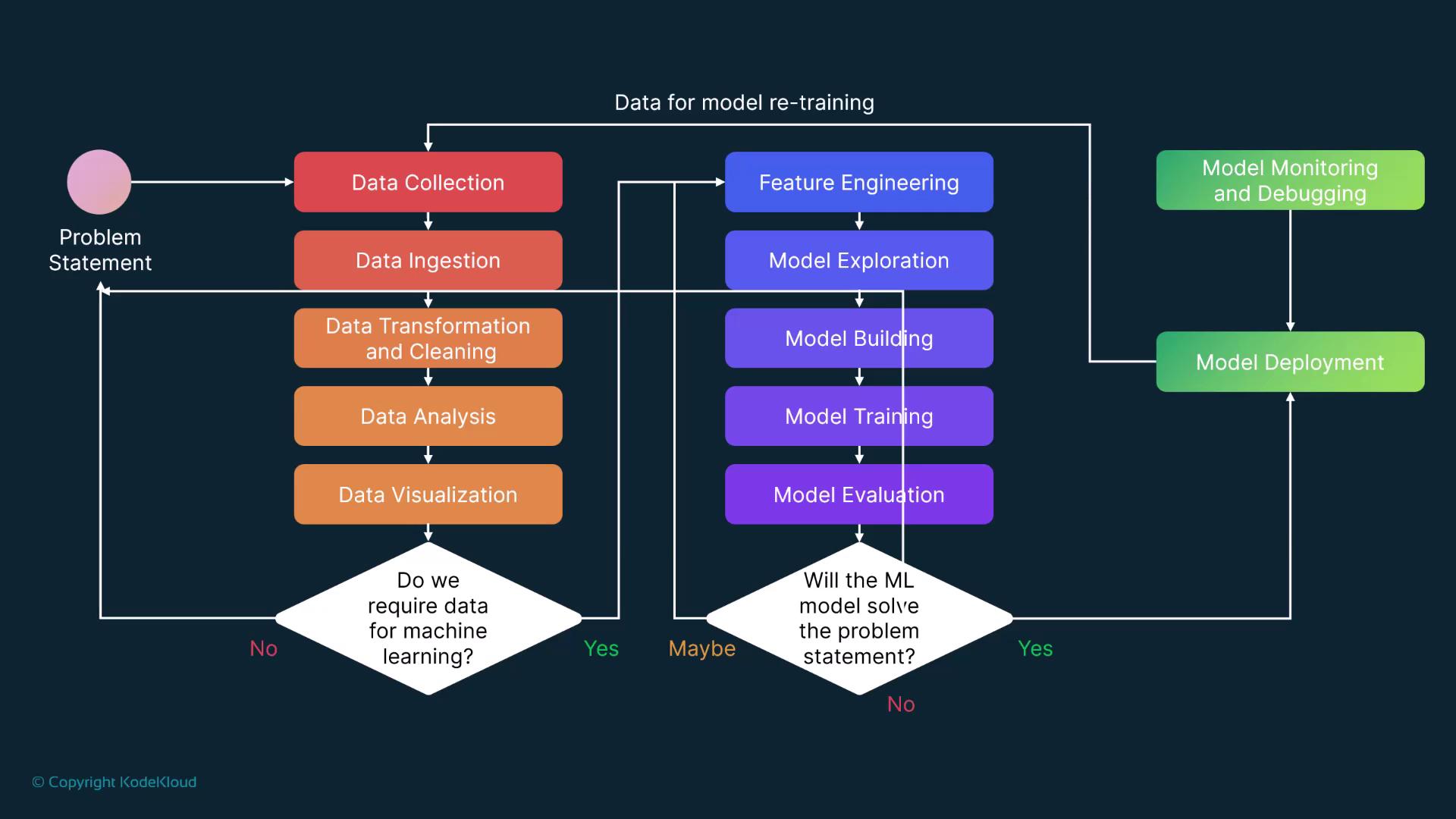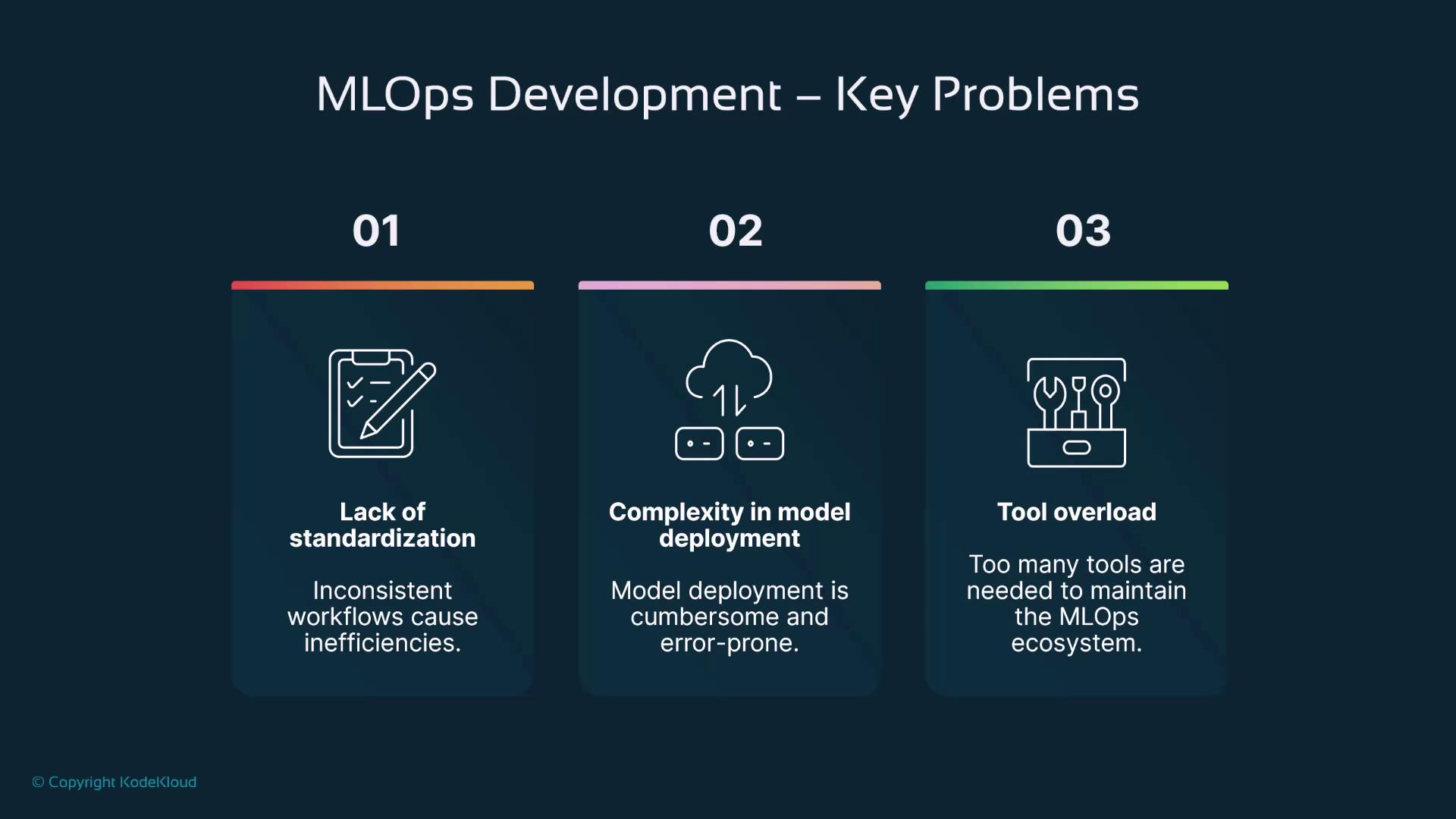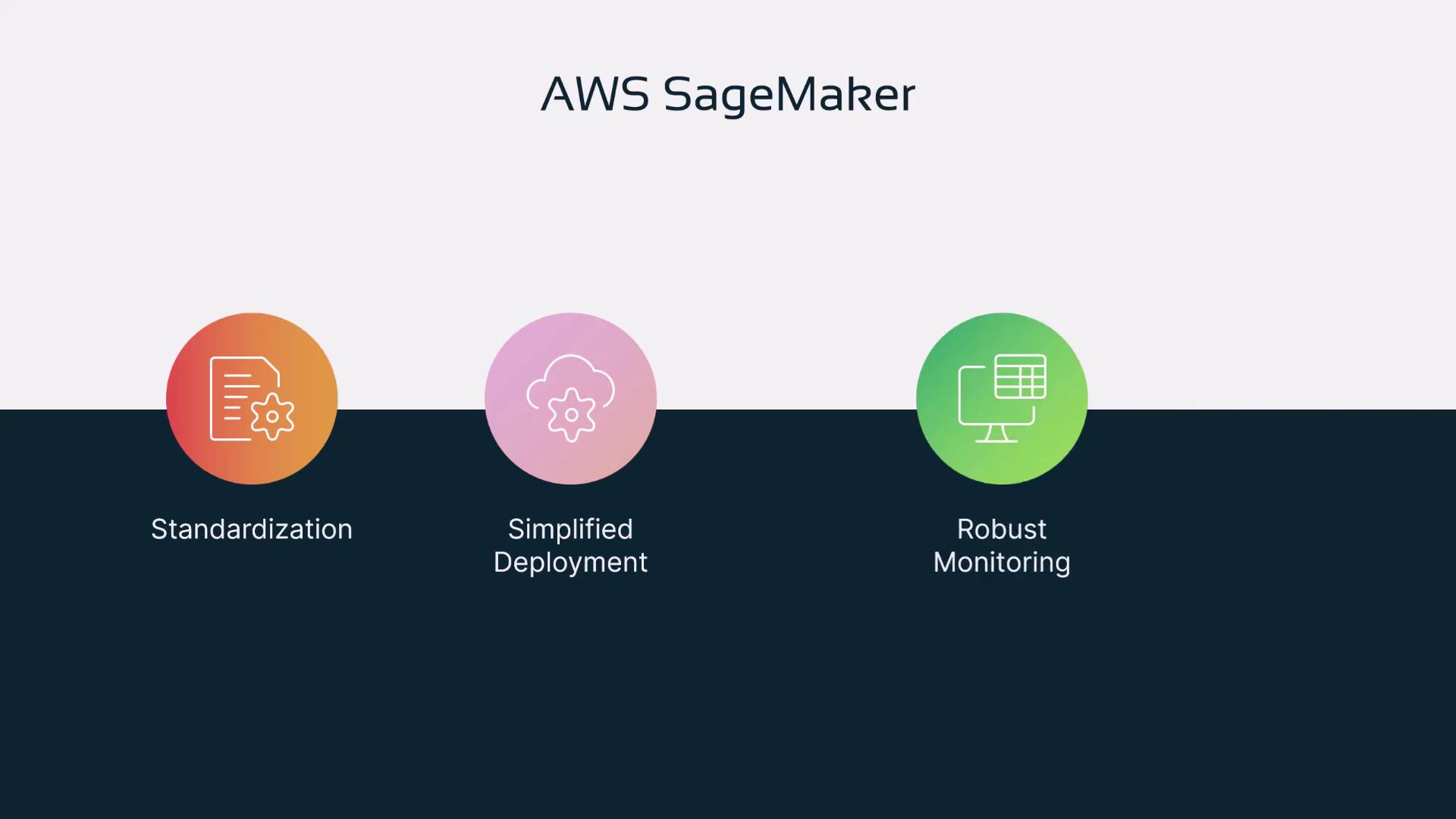Fundamentals of MLOps
Sneak Peek into AWS SageMaker
Overview of SageMaker
Welcome to this in-depth overview of AWS SageMaker. In this article, we explore the major challenges in MLOps and explain how SageMaker streamlines the entire machine learning lifecycle with its unified platform.
Before diving into SageMaker, let’s review the high-level MLOps architecture that many organizations follow:
- Data Collection:
Gather data relevant to the problem (e.g., fraud detection). - Data Ingestion:
Collect data from diverse sources. - Data Transformation and Cleaning:
Process the gathered data to ensure it is structured and clean. - Data Analysis and Visualization:
Analyze and visualize the processed data to fully understand the problem. - Decision Point:
Determine whether a machine learning model is required.- If not, re-assess and redefine the problem statement.
- If yes, continue with:
- Feature Engineering
- Model Exploration, Building, and Training
- Model Evaluation
After evaluating the model, a critical decision must be made regarding its effectiveness. If further adjustments—such as re-engineering features or retraining—are needed, the process iterates until the model performs satisfactorily. Once confirmed, the workflow advances to model development, deployment, and continuous monitoring/training using the latest data.

Note
At every stage of this lifecycle, the MLOps engineer plays a pivotal role in ensuring seamless integration and execution.
Common Challenges in the ML Development Lifecycle
The ML development lifecycle is not without its challenges:
Lack of Standardization:
Inconsistent workflows across teams can result in varied data preprocessing methods, leading to differences in data quality and model performance.Complexity of ML Models:
Manual deployment of ML models—including managing dependencies and environment configurations—can be error-prone and inefficient.Tool Overload:
The necessity to integrate and coordinate numerous open-source tools across multiple ML models (often 20–30) increases operational overhead significantly.

How AWS SageMaker Addresses These Challenges
AWS SageMaker is a fully managed service designed to simplify the machine learning lifecycle—from model building to deployment. It supports end-to-end ML workflows with a wide array of infrastructure options and tools tailored to address common MLOps challenges.
Key Features of AWS SageMaker
Standardization:
SageMaker harmonizes workflows across teams by offering pre-built algorithms and support for custom model deployment through standardized pipelines.Simplified Deployment:
With one-click deployment, SageMaker removes infrastructural complexities. Its real-time monitoring and debugging features quickly address issues such as data drift or performance degradation.
Scalable Infrastructure:
Automatically scaling resources based on demand, SageMaker is ideal for compute-intensive tasks like training computer vision models. This scalability lets you focus on developing high-quality models without worrying about resource allocation.Reproducibility and Versioning:
Easily track changes in data, code, and configurations. This versioning capability is essential for managing multiple iterations of a model, such as those used in fraud detection.CI/CD Integration:
Operating seamlessly within the AWS cloud ecosystem, SageMaker supports integration with services like EKS, EC2, and S3. The platform also enables robust CI/CD pipelines for streamlined deployments, both within and outside AWS.
This comprehensive feature set significantly accelerates the MLOps lifecycle, effectively mitigating issues around standardization, deployment complexity, and operational overhead.
For more details, visit the AWS SageMaker Documentation.
In conclusion, AWS SageMaker simplifies the machine learning process and enhances operational efficiency in MLOps environments. We hope this discussion helps you understand how SageMaker can be leveraged to overcome common challenges in ML development.
Thank you for reading, and stay tuned for more insights in our upcoming articles.
Watch Video
Watch video content